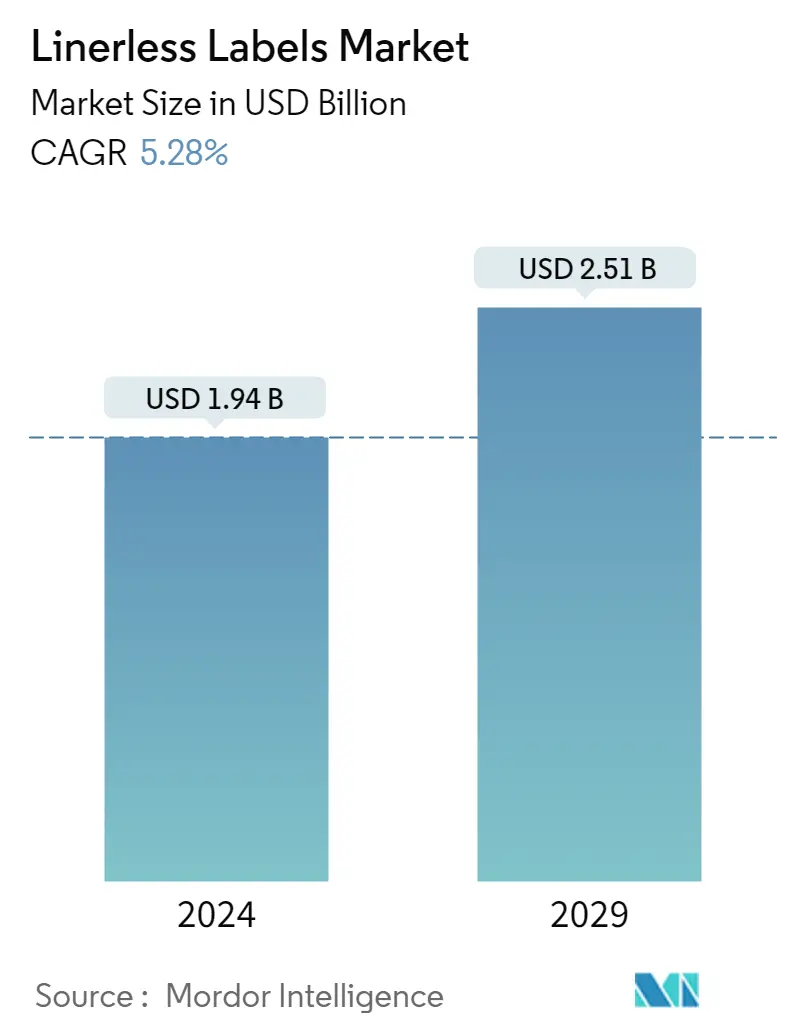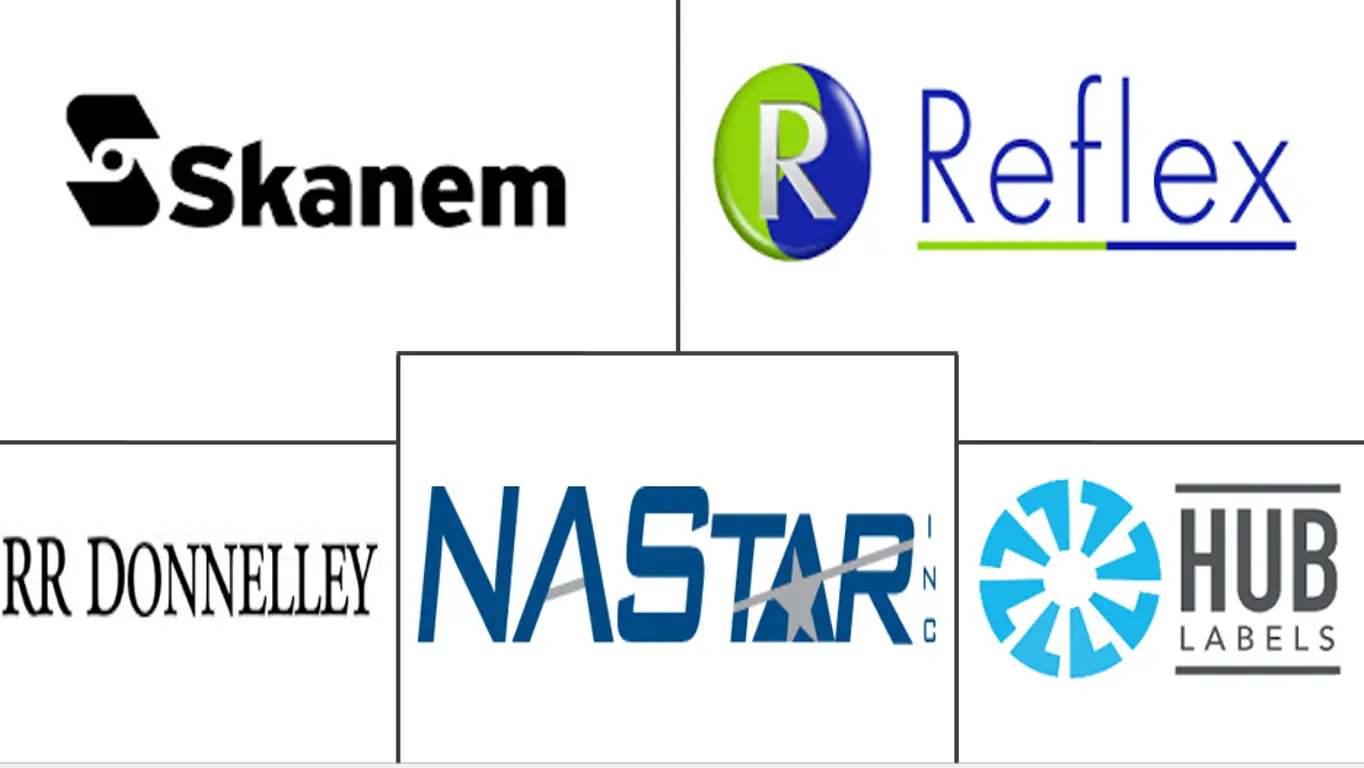Market Size of Linerless Labels Industry

| Study Period | 2019 - 2029 |
| Market Size (2024) | USD 1.94 Billion |
| Market Size (2029) | USD 2.51 Billion |
| CAGR (2024 - 2029) | 5.28 % |
| Fastest Growing Market | Asia Pacific |
| Largest Market | Asia-Pacific |
Major Players
*Disclaimer: Major Players sorted in no particular order |
Need a report that reflects how COVID-19 has impacted this market and its growth?
Linerless Labels Market Analysis
The Linerless Labels Market size is estimated at USD 1.94 billion in 2024, and is expected to reach USD 2.51 billion by 2029, growing at a CAGR of 5.28% during the forecast period (2024-2029).
- Linerless labels have been gaining popularity because they eliminate the need for non-recyclable release liners and reduce costs. Continuous product innovation for linerless labels will sustain future market development. Linerless also offers optimum adhesive placement, wrinkle-free attachment on low-stability surfaces, and thermal transfer variable printability. Linerless labels generate minimum waste compared with pressure-sensitive labels, while the same diameter roll carries a much higher volume of linerless labels.
- Even though linerless labels provide all the benefits of self-adhesive labeling, with improved efficiencies, volume applications, and environmental advantages through their non-utilization of carrier backing paper, they are not an ideal solution for all label production as there are certain limitations.
- All printed labels are positioned on a continuous substrate web until dispensed. For separation, they must either be cut or supplied with a perforation line. The use of transparent substrates and the printing of opaque white prior to the application of the colored inks may contribute to overcoming the limitations in shape. However, this further restricts the range of use for linerless labels. Product innovation for linerless labels, including developments in face stock, adhesives, printable silicone coatings, application equipment, and converting equipment, will support further growth of the sector. The market is witnessing technological innovations owing to the research and development carried out by the players in the market. Such innovations are expected to boost the adoption of linerless labels over the forecast period.
- The packaged food and beverage industry has witnessed a significant increase in demand which is driving the need for liner-free labels and thereby aiding the growth of the market. Several industry guidelines by the government for packaged food have also shaped the demand for linerless labels. According to FDA, packaged and processed food items must have nutritional labeling that makes labeling important. The Food Safety Modernization Act mandates consumer packaged goods to be able to, at minimum, identify the immediate supplier and recipient (other than retailers to consumers) of a product to monitor the path of their products. Such regulations aid the use of linerless labels in packaged food.
- Linerless labels penetrated the market much after the traditional liner labels were made available in the market. Although linerless labels have made great strides in terms of adoption, the market still has a significant number of alternatives, including various kinds of pressure-sensitive labels, which have presented a challenge for the growth of the studied market.
- The linerless label segment has been considered stable in the COVID-19 period, owing to the increasing demand for food and pharmaceutical packaging. The COVID-19 outbreak disrupted the supply chain across various end-user industries, like food and beverage, healthcare, and industrial, among others. The pandemic created unprecedented challenges for supply chain and logistics management in the last few months. Products like canned food, toilet paper, and cleaning supplies have witnessed a significant rise in demand, while other end-use sectors have slowed dramatically.
